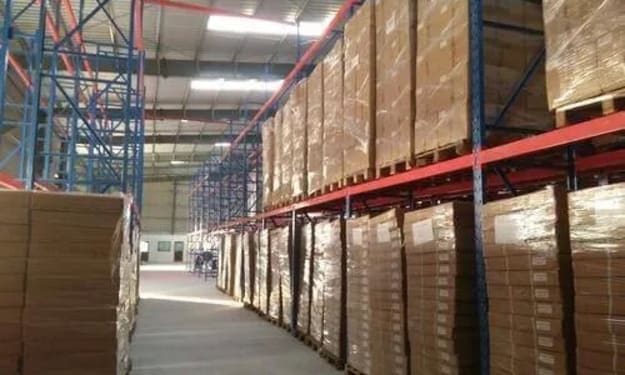Maximizing Warehouse Efficiency and Organization with Pallet Racks
Pallet Racks

Introduction:
In the world of warehousing and logistics, efficient storage and organization are paramount for smooth operations and maximum productivity. Pallet racks have emerged as an indispensable solution, providing an optimal way to store and handle goods. These versatile structures offer a systematic and space-saving approach to managing inventory, reducing clutter, and enhancing overall workflow. In this article, we will explore the benefits, types, and considerations associated with pallet racks, highlighting their essential role in modern warehousing.
1. Understanding Pallet Racks:
Pallet racks are specialized structures designed to store and organize palletized goods. They are typically constructed using steel beams and upright frames, providing robust support and durability. Pallet racks come in various configurations, allowing businesses to customize their storage systems to suit their specific needs. These racks make efficient use of vertical space and enable easy access to stored items, contributing to increased efficiency and operational productivity.
2. Benefits of Pallet Racks:
a. Optimized Space Utilization: Pallet racks enable vertical storage, making efficient use of available warehouse space. By utilizing the height of the facility, businesses can maximize their storage capacity without the need for additional floor space.
b. Improved Inventory Management: Pallet racks facilitate systematic organization, making it easier to track and manage inventory. With clearly designated locations for each pallet, employees can quickly locate and retrieve specific items, reducing order fulfillment times and minimizing errors.
c. Enhanced Accessibility: Pallet racks offer accessibility to each stored unit, allowing for efficient loading and unloading using forklifts or other material handling equipment. This ease of access ensures faster turnaround times and smoother operational flow.
d. Safety and Durability: Pallet racks are built to withstand heavy loads, providing a safe and secure storage solution. With robust construction and adherence to safety standards, these racks minimize the risk of accidents and damage to goods and employees.
e. Adaptability and Scalability: Pallet racks can be easily modified or expanded to accommodate changing business needs. Whether it's adjusting shelf heights or adding more racks, businesses can scale their storage systems as their inventory grows, ensuring long-term flexibility and adaptability.
3. Types of Pallet Racks:
a. Selective Pallet Racks: The most common type, selective pallet racks allow for direct access to each pallet. They are ideal for high turnover inventory and offer versatility in terms of size and weight capacity.
b. Drive-in and Drive-through Racks: These racks provide efficient use of space by eliminating aisles between racks. Drive-in racks allow forklifts to enter the structure from one side, while drive-through racks provide access from both ends. They are suitable for dense storage of homogeneous products with low turnover.
c. Push Back Racks: Designed for high-density storage, push back racks allow multiple pallets to be stored in each lane. The system operates on a gravity flow principle, where loading a new pallet pushes the previous pallet towards the other end for retrieval.
d. Pallet Flow Racks: Similar to push back racks, pallet flow racks use gravity to move pallets. However, in this case, the pallets are loaded from one side and flow towards the other, following a slightly inclined lane. They are effective for first-in, first-out (FIFO) inventory management.
4. Considerations for Implementing Pallet Racks:
a. Warehouse Layout: The layout and dimensions of the warehouse play a crucial role in determining the type and configuration of pallet racks. Analyzing available space, aisle width requirements, and load-bearing capacity are vital considerations during the planning phase.
b. Load Capacity: Understanding the weight and size of the products to be stored is essential to select the appropriate rack type and ensure safety. It is crucial to consult weight capacity guidelines provided by manufacturers and adhere to safety regulations.
c. Accessibility and Ergonomics: The ease of accessing stored items and the safety of warehouse personnel are key factors. Designing the layout to facilitate efficient movement of forklifts and providing proper lighting and safety equipment contribute to a safe and ergonomic work environment.
d. Maintenance and Inspection: Regular maintenance and inspection of pallet racks are essential to ensure their longevity and structural integrity. Periodic checks for damage, wear, or corrosion help identify and address potential issues before they escalate.
Conclusion:
Pallet racks have revolutionized warehouse storage systems, enabling businesses to streamline operations, optimize space, and enhance inventory management. Their versatility, adaptability, and safety features make them an integral part of modern warehousing. By implementing the appropriate pallet rack configurations and adhering to safety guidelines, businesses can maximize efficiency, improve productivity, and stay competitive in today's fast-paced logistics landscape.





Comments
There are no comments for this story
Be the first to respond and start the conversation.